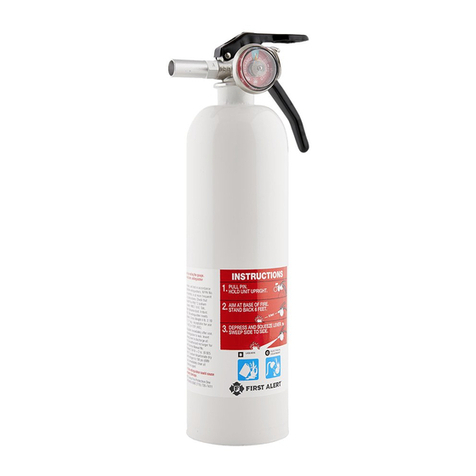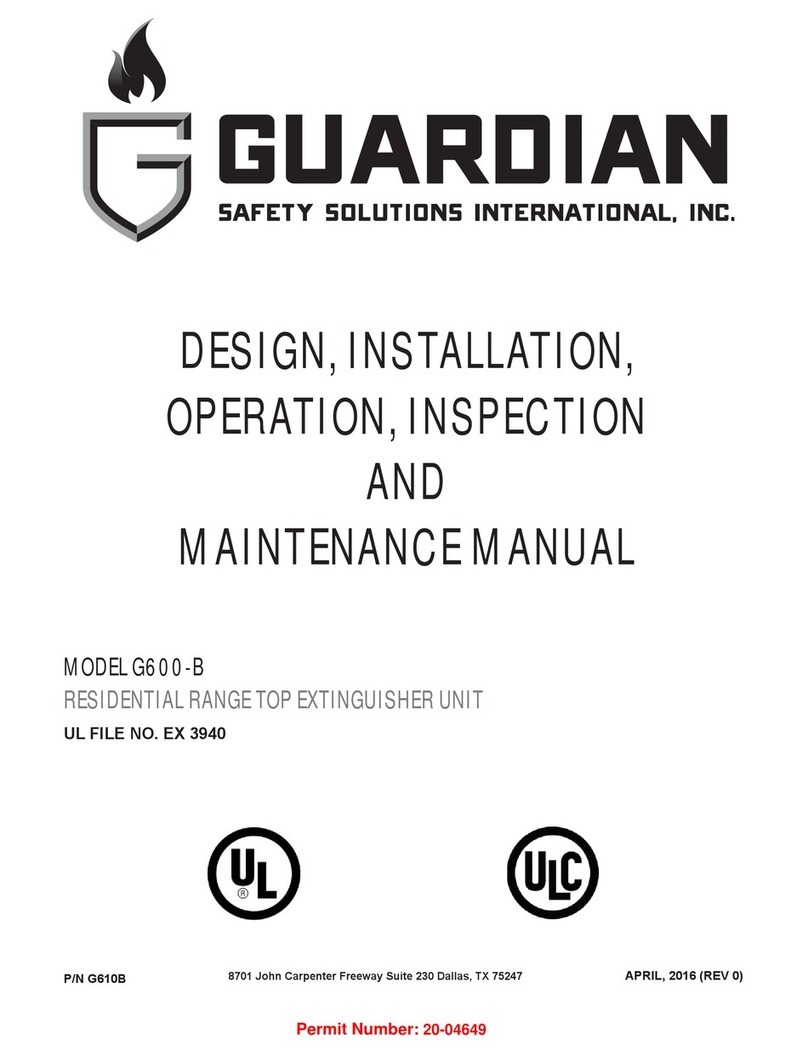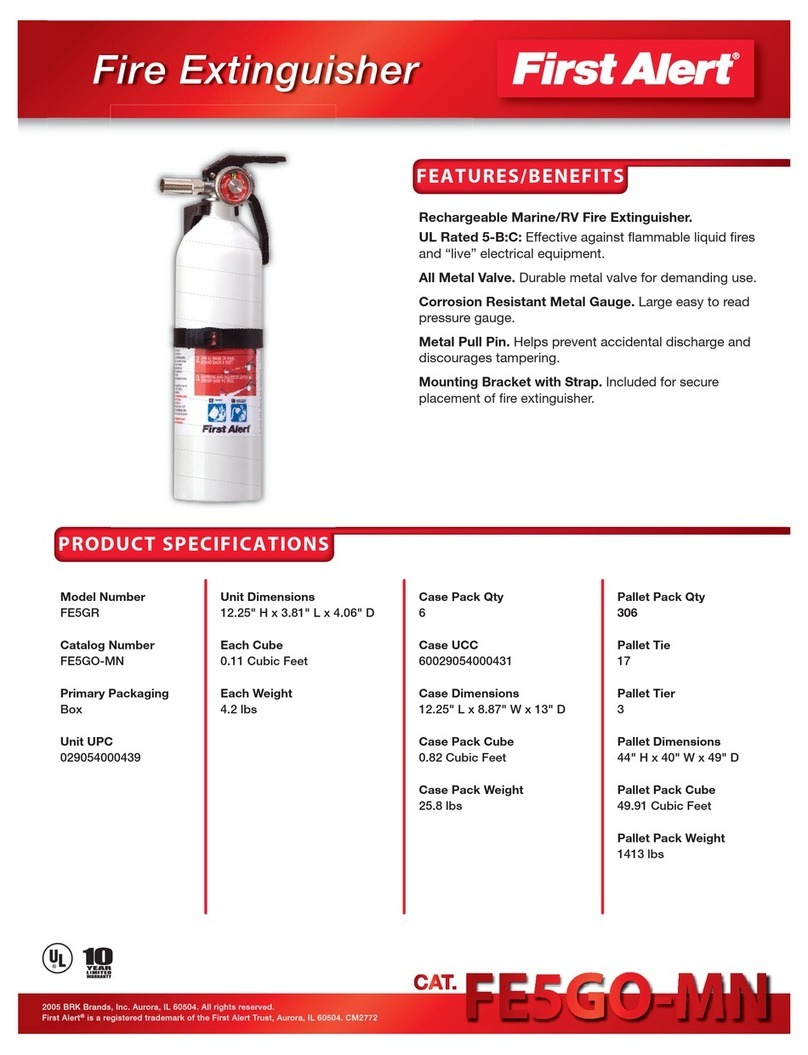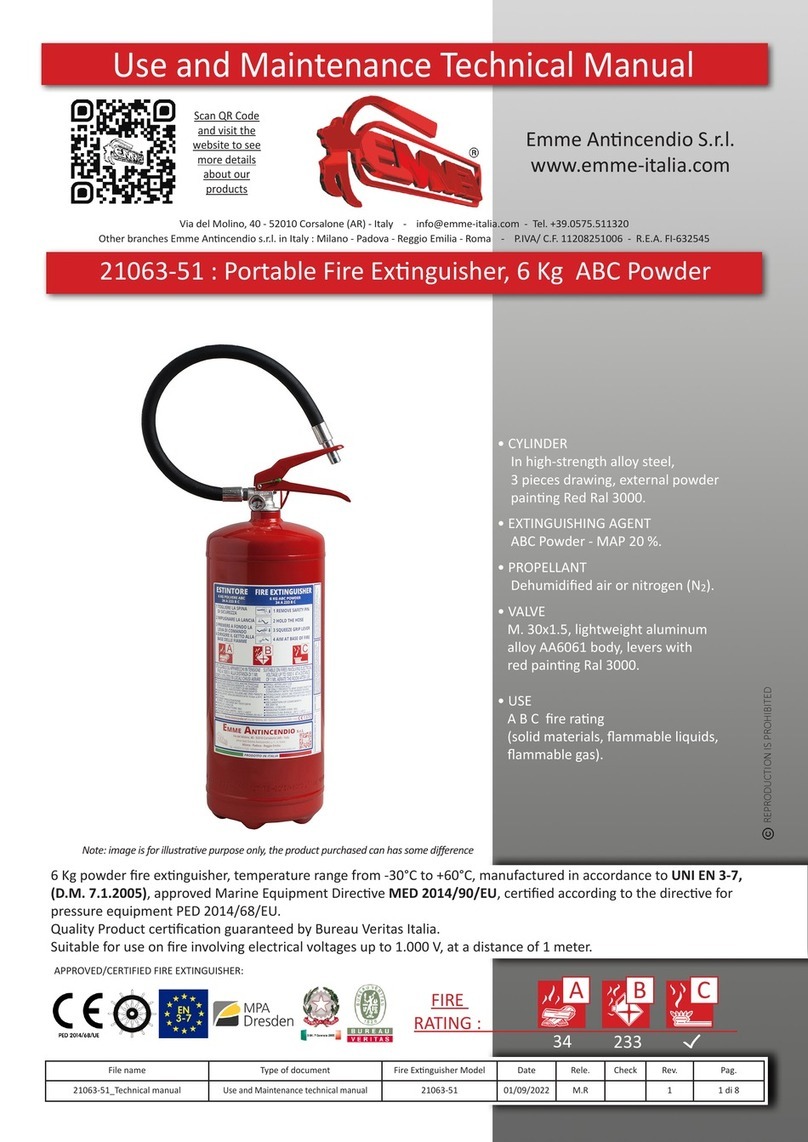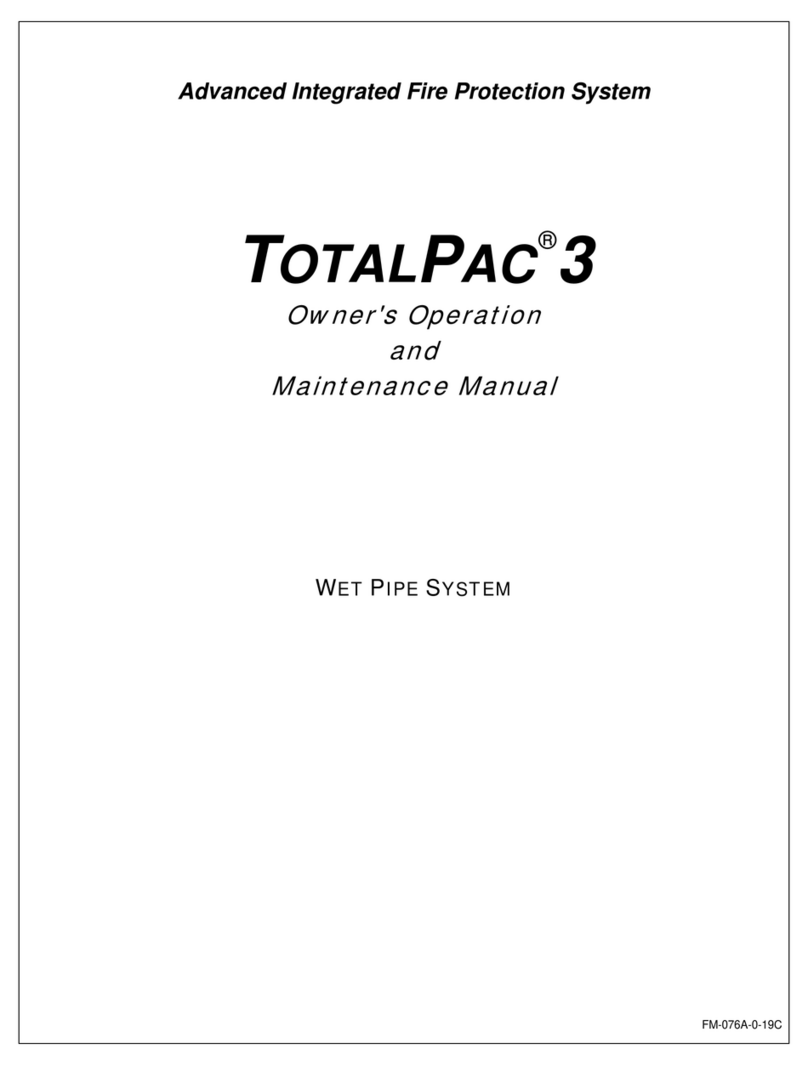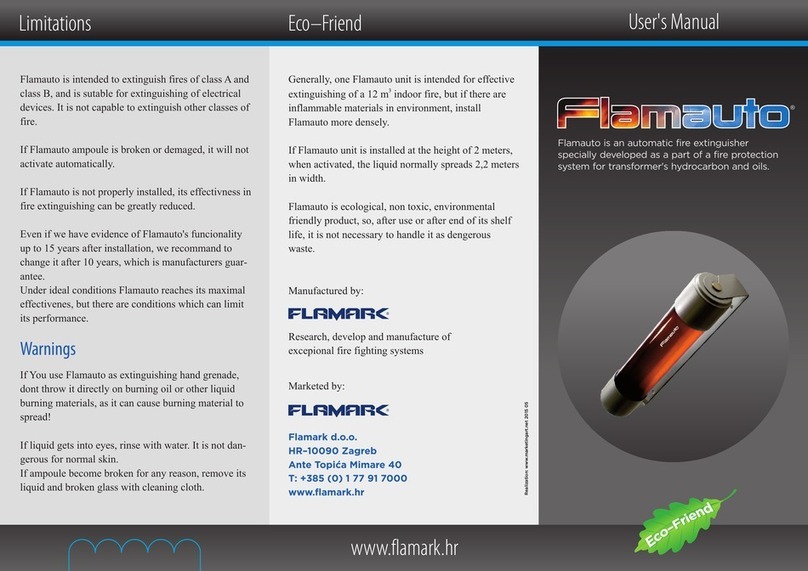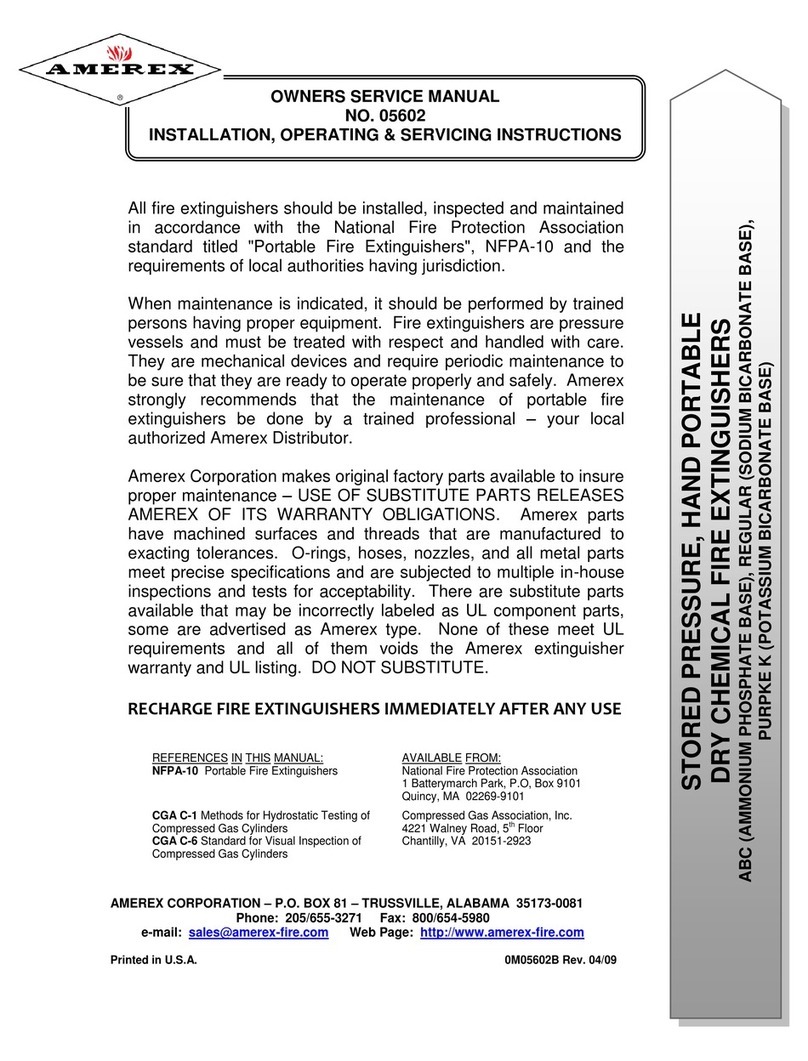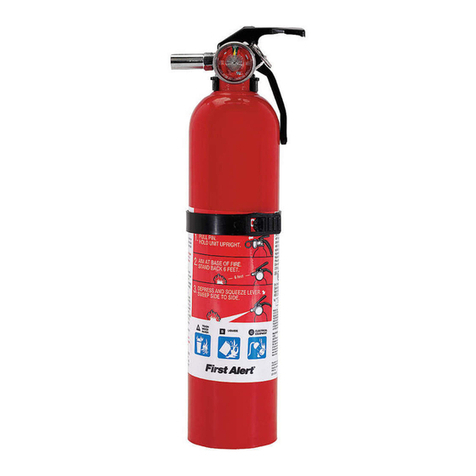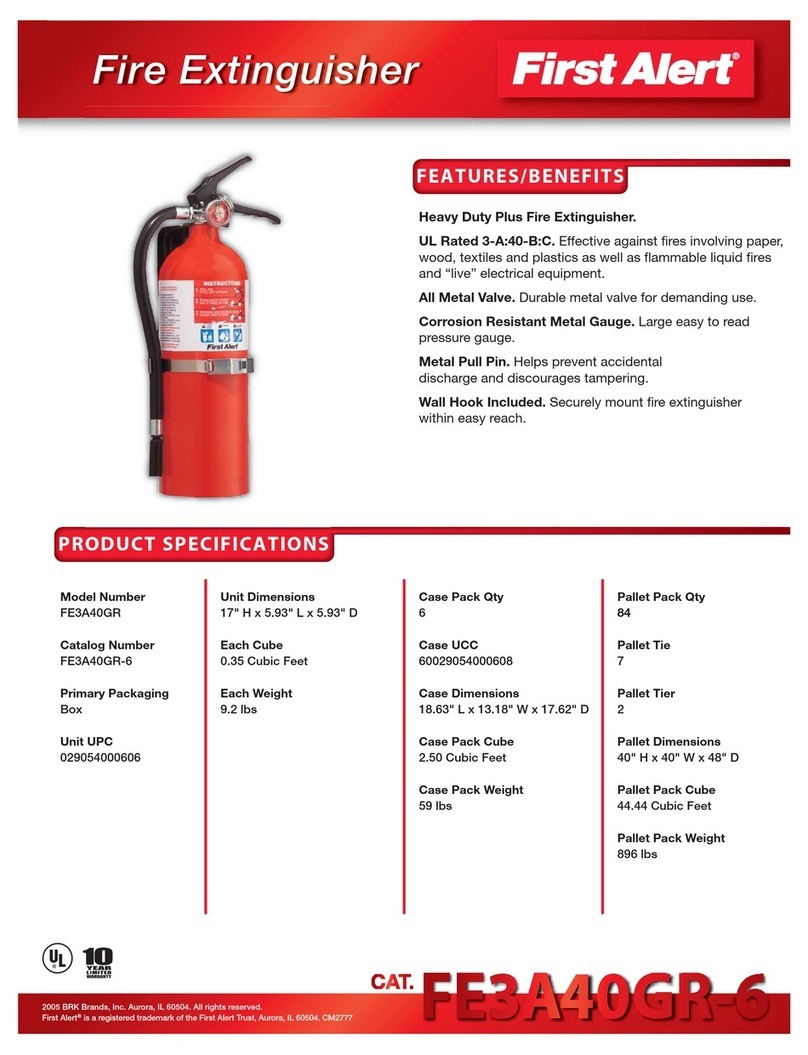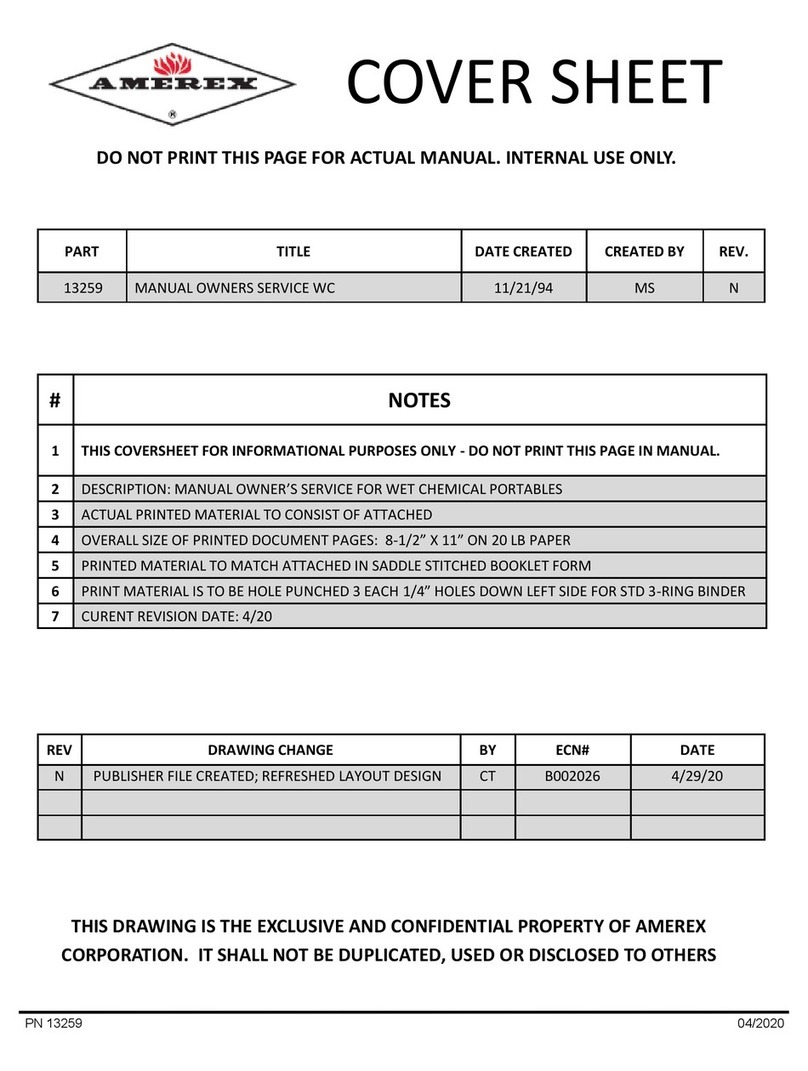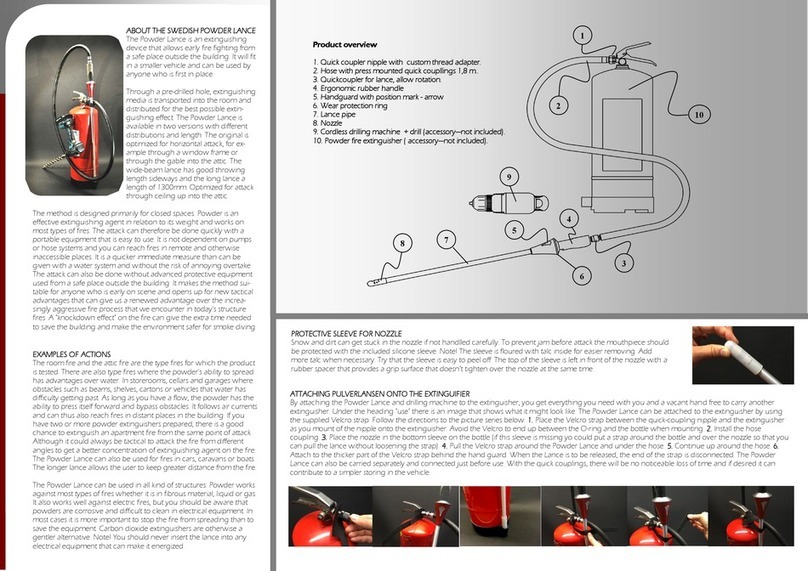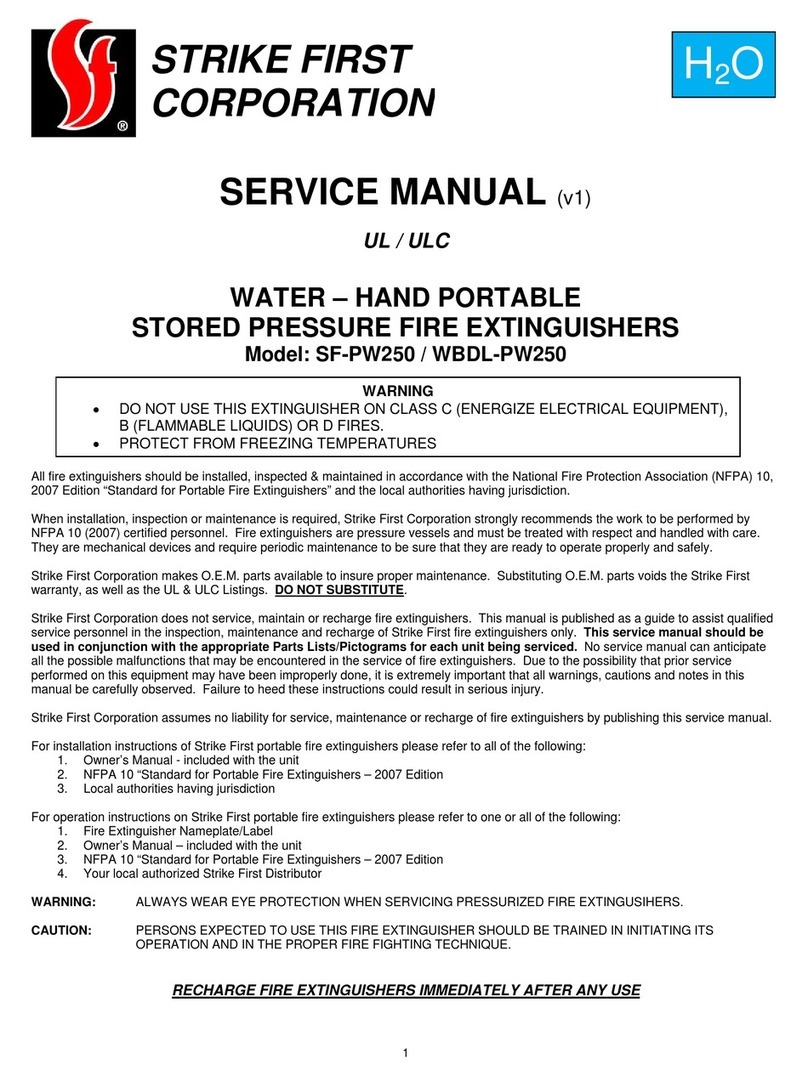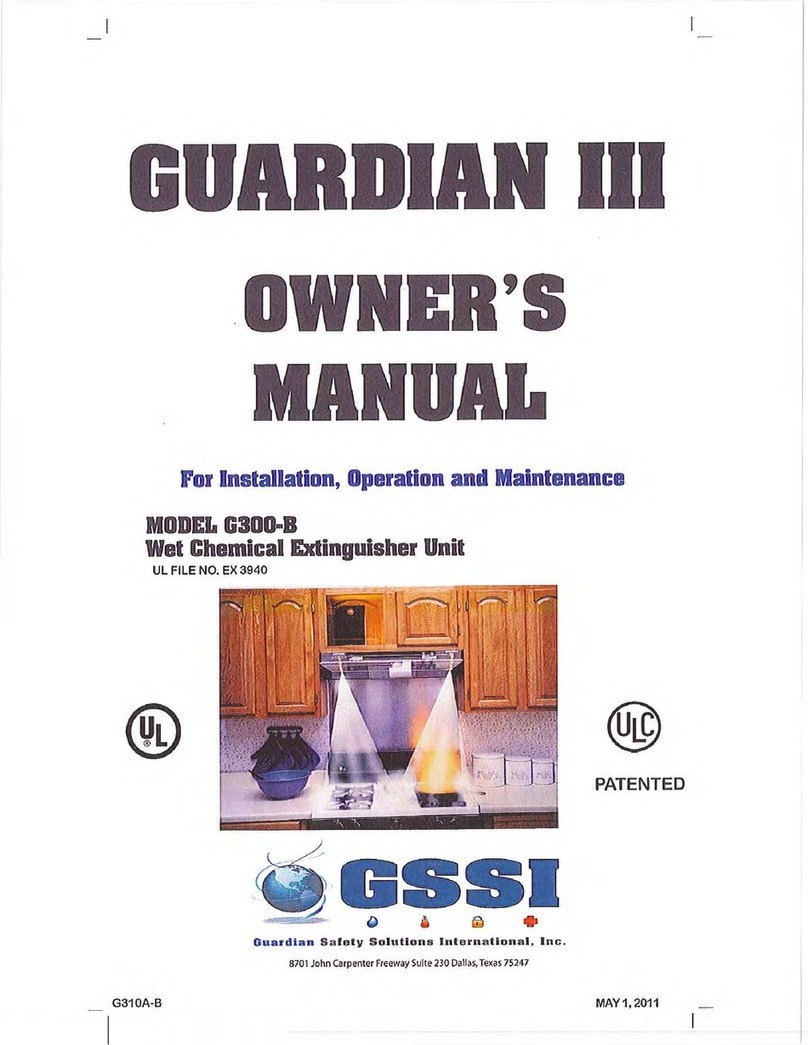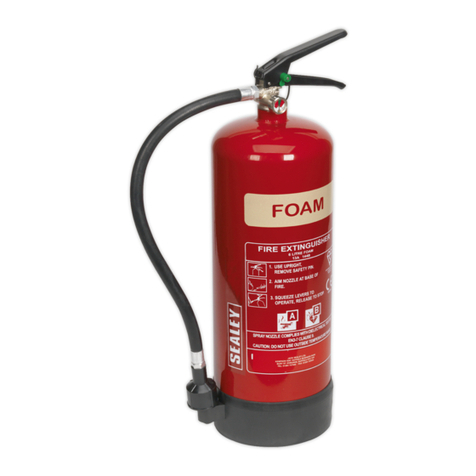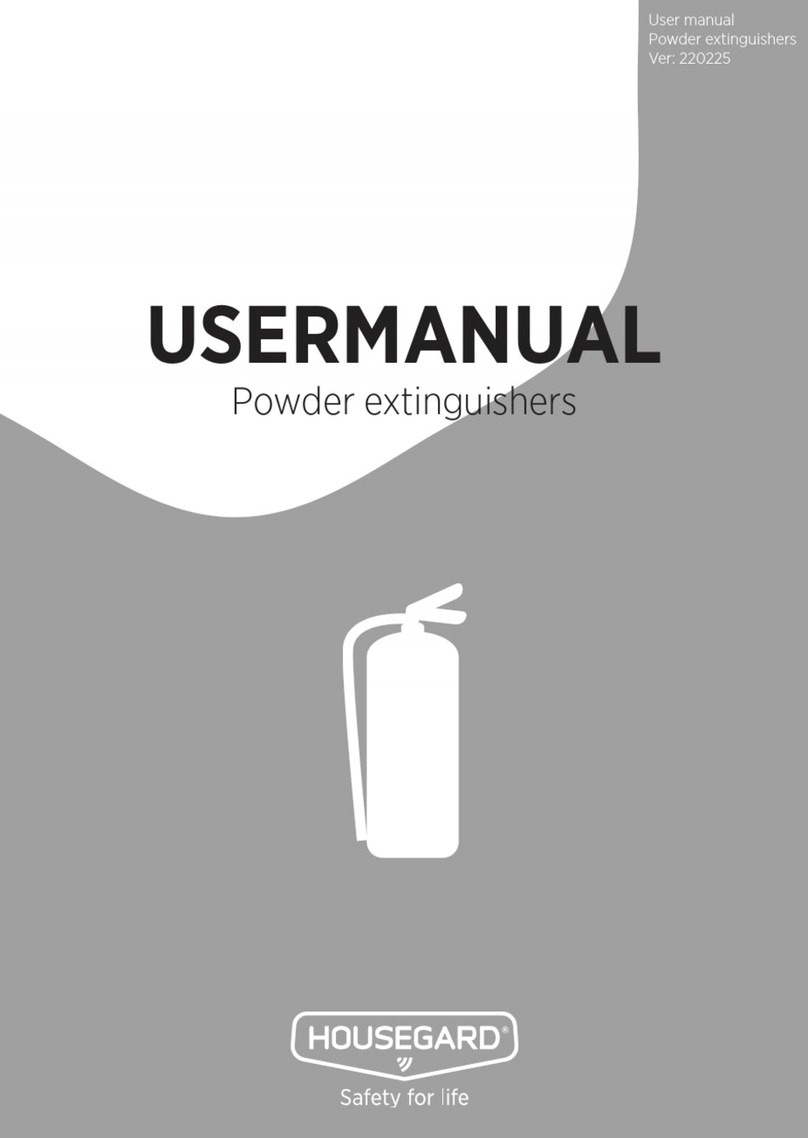
TYPES OF EXTINGUISHERS
Dry Chemical fire extinguishers extinguish the
fire primarily by interrupting the chemical reaction
in the fire. Today’s most widely used type of
fire extinguisher is the multipurpose dry chemical
that is effective on Class A, B and C fires. This agent
also works by creating a barrier between the oxygen
element and the fuel element on Class A fires.
Ordinary dry chemical is for Class B & C fires only.
It is important to use the correct extinguisher for
the type of fuel! Using the incorrect agent can
allow the fire to re-ignite after apparently being
extinguished successfully.
Water and Foam fire extinguishers extinguish
the fire by taking away the heat from the fire.
Foam agents also separate the oxygen from the
fuel and heat. Water extinguishers are for Class A
fires only,they should not be used on Class B or C
fires. The discharge stream could spread the
flammable liquid in a Class B fireor could create a
shock hazardon a Class C fire. Foam extinguishers
can be used on Class A & B fires only.They are not
for use on Class C fires due to the shock hazard.
Carbon Dioxide fireextinguishers extinguish
the fire by separating the oxygen element from the
fuel and heat, and also by removing the heat with
avery cold discharge. Carbon dioxide can be used
on Class B & C fires. They are usually ineffective on
Class A fires.
Wet Chemical is a new agent that extinguishes
the fire by removing the heat from the fire and
prevents re-ignition by creating a barrier between
the oxygen and fuel elements. Wet chemical or
Class K extinguishers were developed for modern,
high efficiency deep fat fryers in commercial
cooking operations. Some may also be used on
Class A fires in commercial kitchens.
Halogenated or Clean Agent extinguishers
are either based on halocarbon agents or on the
older and no longer made halon 1211 agent,
which can no longer be used for training.
Halocarbon agents replaced halon 1211 within the
last 8 years and are much more environmentally
acceptable. Commercialized halocarbon agents
extinguish the fire by removing heat from the
combustion zone. Halon 1211 extinguishers, how-
ever, were chemically active and interfered with
the chemical reactions occurring in the combustion
zone. Halocarbon and halon 1211 extinguishers
areeffective on Class A, B, and C type fires,
although verysmall sizes do not achieve the
lowest UL Class A rating, 1-A.
DryPowder extinguishers aresimilar to dry
chemical except that they extinguish the fireby
separating the fuel from the oxygen element of
the fire. However,drypowder extinguishers are
for Class D or combustible metal fires, only.They
areineffective on all other classes of fires.
Water Mist extinguishers arearecent develop-
ment that extinguishes the fireby taking away
the heat from the fire. They arean alternative to
the clean agent extinguishers wherecontamination
is a concern. Water mist extinguishers areprimarily
for Class A fires, although they aresafe for use on
Class C fires as well.
fireextinguisher.com
